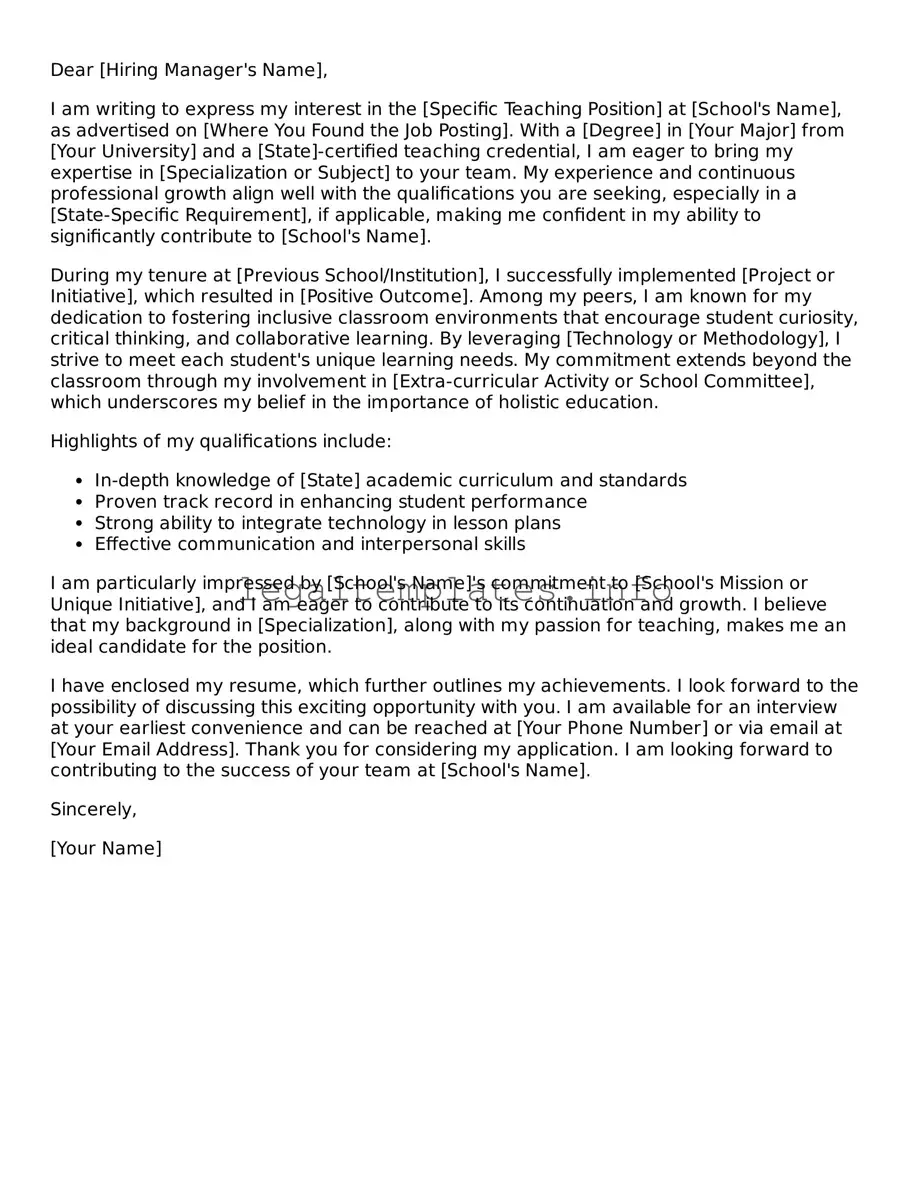What is a Letter of Intent for a Teaching Job?
A Letter of Intent for a Teaching Job is a formal document where a candidate expresses their interest in a teaching position. It outlines the candidate's qualifications, teaching philosophy, and reasons for wanting to work at the specific institution. This letter serves as an introduction to the candidate's resume, offering a personalized overview of their strengths and aspirations within the teaching field.
Why is a Letter of Intent important for applying to teaching positions?
It is crucial because it provides a first impression of you to the hiring committee. Unlike a resume, which lists qualifications and experiences, a Letter of Intent allows you to narrate your passion for teaching and your dedication to education. It's an opportunity to highlight how your unique skills and background make you the perfect fit for the role and the school’s culture, potentially setting you apart from other applicants.
What should be included in a Letter of Intent for a Teaching Job?
Your Letter of Intent should include a brief introduction of yourself, an explanation of why you are interested in the position and the institution, a summary of your qualifications and teaching experience, your teaching philosophy, and a conclusion with a polite request for an interview. Personalizing the letter to reflect how your values align with the school's mission and mentioning any contributions you hope to make can make your letter stand out.
How long should a Letter of Intent be?
A Letter of Intent should typically be one page long. It's important to be concise and to the point while still providing a clear and compelling overview of your qualifications and enthusiasm for the position. Enough detail should be included to interest the reader in wanting to know more about you, ideally leading to an interview invitation.
Can I use the same Letter of Intent for multiple teaching job applications?
While you can use the same basic structure or format, it's essential to customize your Letter of Intent for each application. Tailoring the letter to each institution shows that you have taken the time to research and understand what makes each school unique and demonstrates your genuine interest in working there. Using a one-size-fits-all approach may come across as impersonal and diminish your chances of making a positive impression.
How do I format a Letter of Intent for a Teaching Job?
Your letter should follow a professional business letter format, including your contact information and the date at the top, followed by the employer's contact information. The body of the letter should contain an introduction, body paragraphs covering your qualifications and teaching philosophy, and a conclusion. It should be left-aligned, using a simple, readable font. Always conclude with a professional closing and your signature.
What is the best way to submit a Letter of Intent for a Teaching Job?
Follow the application instructions provided by the school. If unspecified, submitting your Letter of Intent as a PDF via email is generally preferred to maintain the formatting. Ensure the subject line clearly indicates the position you're applying for, and include a brief, professional email message introducing yourself and expressing your attached application. If physical submissions are requested, ensure your documents are printed on quality paper and enclosed in a professional folder or envelope.
